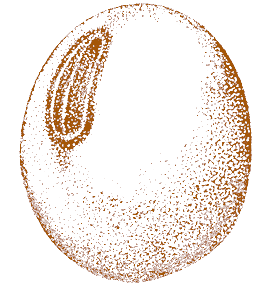
|
|
|
Composition
of a Soybean |
In processing, soybeans are cleaned, cracked, dehulled and rolled into flakes. This ruptures the oil cells for efficient extraction to separate the oil and meal components. |
 |
Soybean oil finds its way into food products such as margarine, salad dressings and cooking oils, and industrial products such as plastics and biodiesel fuel.
Lecithin, extracted from soybean oil, is used for everything from pharmaceuticals to protective coatings. It is a natural emulsifier and lubricant. Lecithin is used, for example, to keep the chocolate and cocoa butter in a candy bar from separating. |
After removal of the soybean oil, the remaining flakes can be processed into various edible
soy protein products, or used to produce
soybean meal for animal feeds. The dry (solid) portion of the bean provides a host of edible products.
The soybean is the highest natural source of dietary fiber. Eight essential amino acids are found in soybeans, which are necessary for human nutrition and are not produced naturally in the body.
Soy flour and grits are used in the commercial baking industry. They aid in dough conditioning and bleaching. Their excellent moisture-holding qualities also help retard staling.
Soy hulls are processed into fiber bran breads, cereal and snacks. |
|
|
Source: American
Soybean Association |
|
|
|
Return to Soy Stats homepage |
Order a printed Soy Stats |
|
Major funding for the 2009 edition of Soy Stats® was provided by the United Soybean
Board, with additional financial
support of the Illinois Soybean Association, Indiana Soybean Alliance, Iowa Soybean Association, South Dakota Soybean Research & Promotion Council, North Dakota Soybean Council, Ohio Soybean Association, U.S. Soybean Export Council, Minnesota Soybean Research & Promotion Council, North Carolina Soybean Producers Association, Arkansas Soybean Association and Texas Soybean Association. |
Soy
Stats®
is copyright © 1994-2009 The American Soybean Association. All Rights
Reserved. |
|
|
|
|